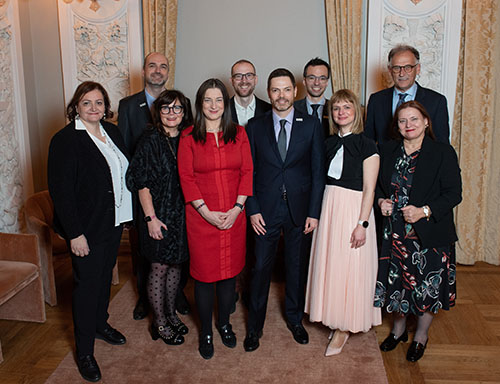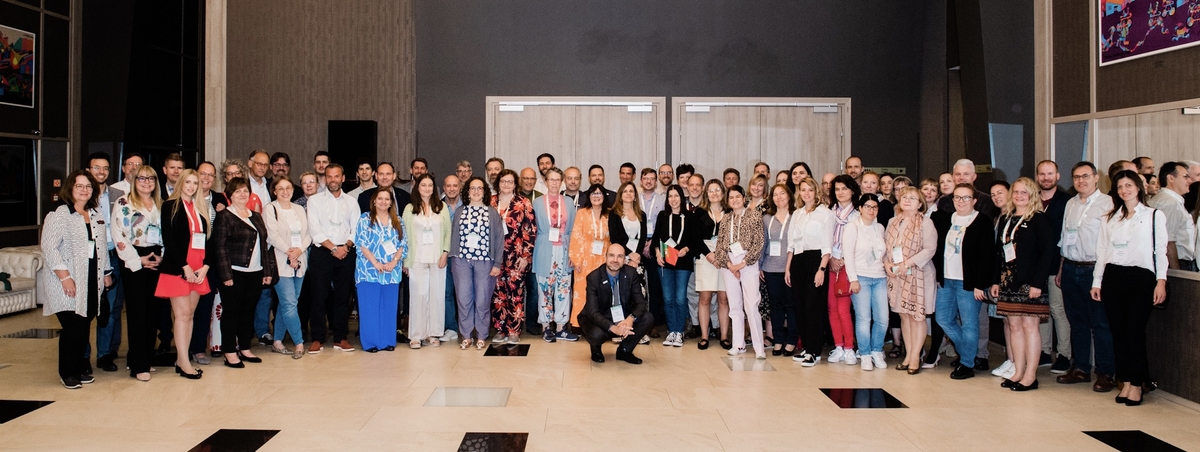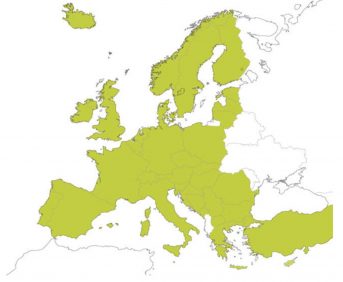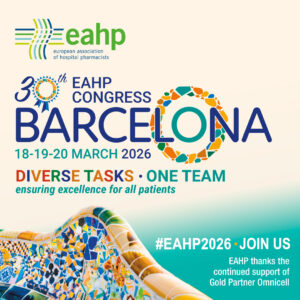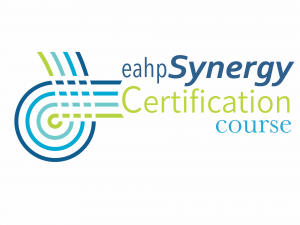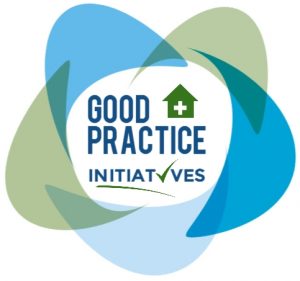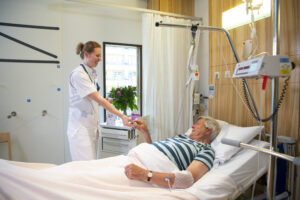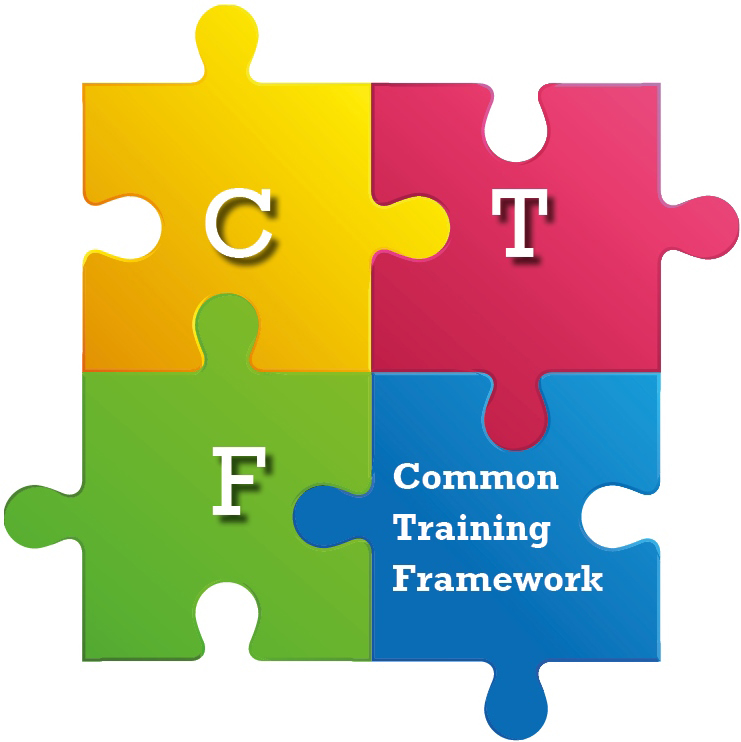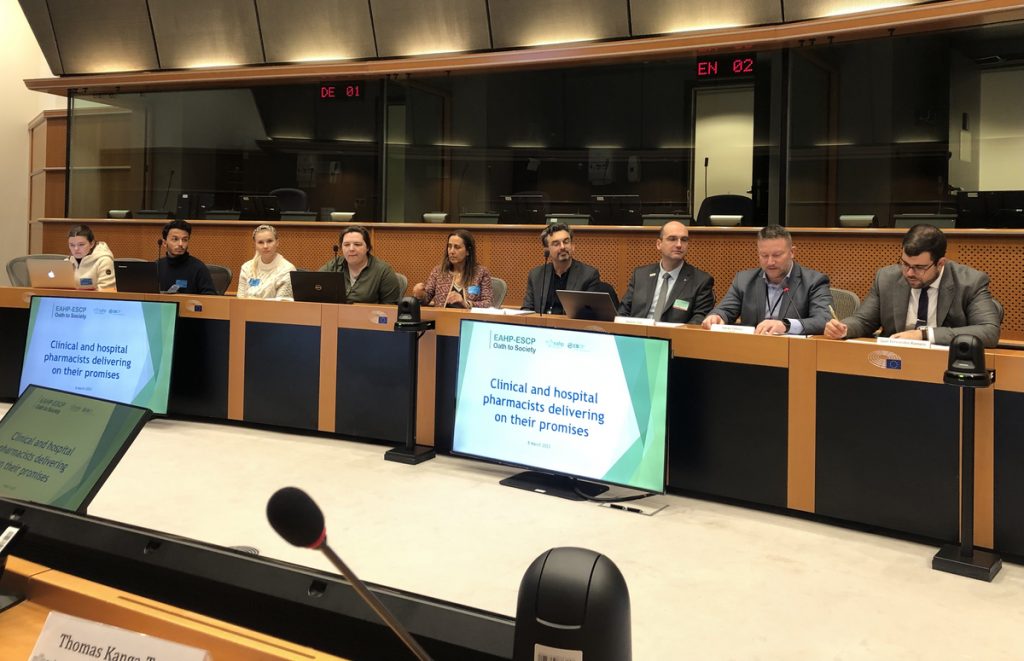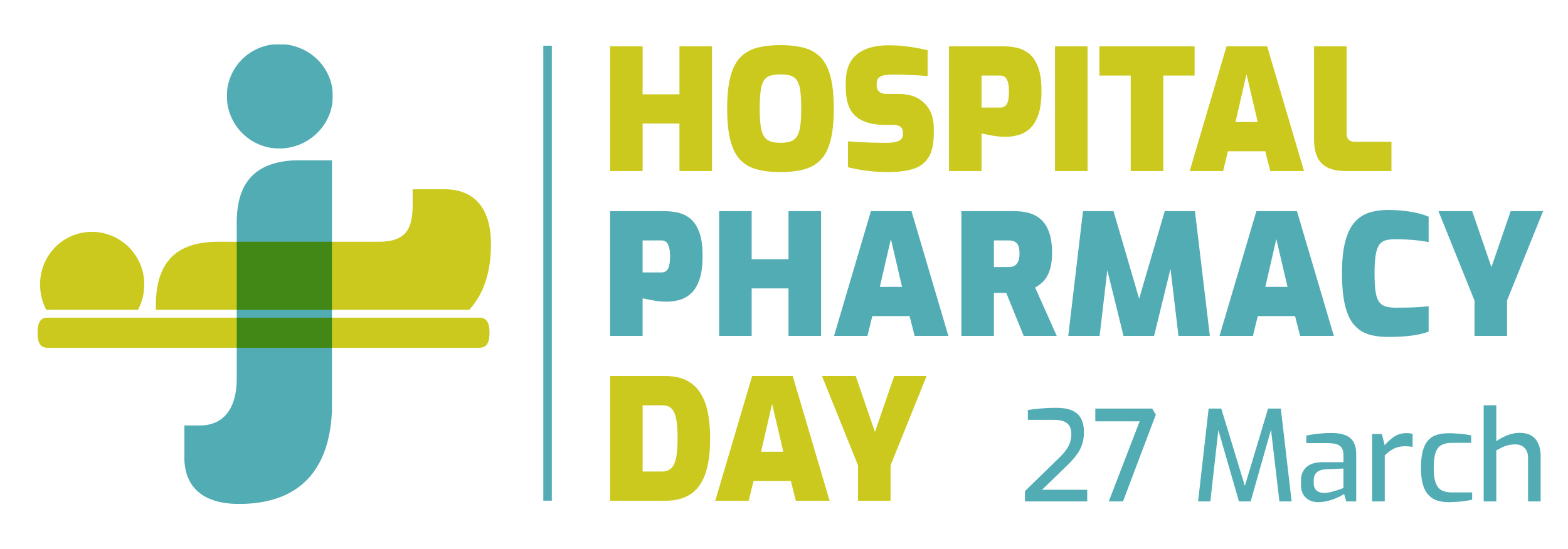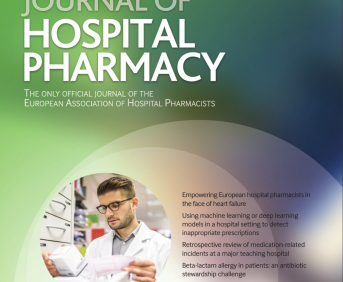DESIGNING A PROTOCOL TO IDENTIFY AND IMPROVE ADHERENCE IN PATIENTS WITH ANTIRETROVIRAL THERAPY IN THE HOSPITAL SETTINGS.
European Statement
Clinical Pharmacy Services
Author(s)
Luis Díaz Suárez, Elena Sánchez-Yanez , Raquel López Escoz, Mercedes Gómez Delgado, Nuria Martínez Casanova, Isabel Moya Carmona
Why was it done?
The hospital pharmacist plays a role obtaining therapeutic success by improving the adherence. Our unit attends around 1900 HIV patients, so the interventions we make to improve adherence will have a positive impact on patients and community.
What was done?
The Pharmacy Service has developed a protocol for the identification of non-adherent HIV patients to treatment along with the pharmaceutical attendance strategies designed to improve the adherence to ART.
How was it done?
The protocol was drawn up with the recommendations of the National AIDS Plan(PNS), the Spanish Society of Hospital Pharmacy(SEFH) and the AIDS Study Group(GeSIDA). Thus, we wanted to provide a multidisciplinary approach for non-adherent patients. The relevant aspects of the protocol are described below:
1.-Identification of patients: Technical staff and pharmacists identify patients with poor adherence through dispensing records, a history of previous voluntary abandonment of ART or the presence of risk factors for poor adherence to ART.
2.-Pharmaceutical attendance following the CMO model.
· Data such as viral load, CD4, prescribed ART, pharmacotherapeutic complex index, home medication, polypharmacy, pluripathology and risk factor have
been collected. Adherence was calculated using dispensing records and adherence questionnaire(SMAQ).
· Health education and motivational interviewing.
· Personalised planning of patient care following face-to-face and non-face-to-face programs. Every 6months adherence will be re-evaluated to assess the
success of the pharmaceutical care offered.
What has been achieved?
The protocol was implemented in March-2021, and to date, 68patients have been included. 73.5%(n=50) of them have been followed for more than 6 months. 88% of whom(n=44) improved their adherence to both ART, all of them achieving an undetectable viral load and an elevation of the CD4 count.
What next?
Our desire is to continue detecting patients and to contribute to the improvement of the adherence to their treatment. We are aware of the challenge that lies ahead in the near future, as the progressive ageing of the HIV population means an increase in associated comorbidities and polypharmacy, which may have a negative impact on the adherence.
Implementation of an Antibiotic Stewardship Program in Primary Care
European Statement
Clinical Pharmacy Services
Author(s)
CLARA NOTARIO DONGIL, ALEJANDRO MARCOS DE LA TORRE, MARÍA CARMEN CONDE GARCÍA, MARÍA MAR ALAÑÓN PARDO, BEATRIZ PROY VEGA, NATALIA ANDRÉS NAVARRO
Why was it done?
Most of the cultures performed in outpatients were not reviewed or were reviewed too late. An early detection for an adequate control of multidrug-resistant bacteria and the setting of a targeted antibiotic treatment, in case of being necessary, was the aim of this project. Hence basis for the implementation of an ASP is laid down, giving also advice to medical staff regarding appropriate antibiotic treatments.
What was done?
Multiresistant bacteria containment is a public health priority. Antibiotic Stewardship Programs (ASPs) can help to enhance patient outcomes by improving antibiotic prescribing. ASPs are common in hospitals, but are not usually available in primary care.
How was it done?
1- A circuit between microbiology laboratory staff, preventive medicine and pharmacy service was done. The first two collaborated by presenting data from lab results.
2- Cultures of multidrug-resistant species of outpatients were included. Results were interpreted by a hospital pharmacist on a daily basis.
3- A circuit of telephone calls between pharmacy and primary care was settled in order to communicate high epidemiological impact species detected. Pharmacist collaborates by giving advice regarding the right drug, right dose and right time, only when antibiotic treatment was necessary. Reports were registered on the medical history.
4- Variables collected in database were: age, sex, institutionalized, antibiotics received, kidney disease, culture type, specie.
What has been achieved?
During five months, 52 patients were included (52% male, 48% female). Mean age: 68 years. 11% institutionalized patients. 31% presented kidney disease.
Urine culture (58%),skin culture (13%), bronchial/sputum culture (12%), stool culture (12%), , and other cultures (5%) were analysed. Multidrug-resistant species (spp) were: Klebsiella spp (34%); Pseudomonas spp (8%); Mycobacterium spp (6%); other spp (52%).
17 pharmacist interventions were carried out, all of them related to appropriated treatment. 2 patients were hospitalized in order to receive parenteral antibiotic.
What next?
Optimizing antibiotics use is important to effectively treat infections. Identifying species that generate therapeutic difficulties is essential. Pharmacist advice could reduce treatment failures applying efforts to improve antibiotic use, being link of union between hospital and primary care. Other activities such as providing training to medical staff or spread results regarding to the use of antibiotics will be critical for ASP development.
MEDICATION REGIMEN COMPLEXITY INDEX AMONG SOLID ORGAN TRANSPLANT PATIENTS
European Statement
Clinical Pharmacy Services
Author(s)
Andrea Costa-Navarro, Emilio Monte-Boquet, Mª Jesus Cuellar-Monreal, Ana Garcia-Robles, Eduardo Guerrero-Hurtado, Alejandra Ferrada-Gasco, Octavio Ballesta-Lopez, Andres Cruz-Sanchez, Jose Luis Poveda-Andres
Why was it done?
Complex medication regimens (MR) are associated with worse treatment adherence. The Medication Regimen Complexity Index (MRCI) is a validated tool used to quantify complexity of MR and it is the sum of the score in three sections: Dosage forms (A), dosing frequency (B) and additional directions (C).
What was done?
To assess the relative MR complexity among solid organ transplant patients (SOT; kidney, heart, lung and liver) in a tertiary hospital through the validated MRCI Spanish version.
How was it done?
Transplant patients who collected medication in the Hospital Pharmacy between January and March 2021 were selected. A total amount of 40 patients (ten per transplant) were chosen randomly through Excel®, and a macro with a template of MCRI was created. The qualitative variables were age, sex and type of transplant; the quantitative ones were months from transplant, total amount of medications, sections A, B, C and total MRCI. All prescribed medications documented in medical records at the hospital ambulatory clinics and the electronic medication list were included. Patients were excluded if they were followed-up in other hospitals, were exitus or MR dosage or frequency was missed/unclear. Subgroup analyses was made to assess MRCI among type of transplants through ANOVA. All data analysis were made with SPSS® version 23, with a <0,05 significance level and a confidence interval of 95%.
What has been achieved?
Sample median age was 56,6±14,7 years (95%CI:51,9-61,3), a 40%(16/40) were women, median of time from trasplant was 92,7±69,9 months (95%CI:70,4-115,0) and number of medications 11,1±4,6 (95%CI:9,6-12,6). Subgroup median MCRI were 23,3±10,2 (kidney; [95%CI:16,0-30,5]), 46,2±12,8 (lung; [95%CI:37,1-55,3]), 28,5±11,1 (heart; [95%CI:20,6-36,4]) and 18,7±5,4 (liver; [95%CI:14,8-22,5]). Section B was the most contributor to MCRI (16,6±8,2 [95%CI:14,0-19,2]), followed by C (6,6±4,3 [95%CI:5,2-7,9]) and A (5,7±3,7 [95%CI:4,5-6,9]). Tukey test showed a statistically significant MCRI in lung transplant with p<0,001 when compared to kidney and liver transplants, and p=0,002 compared to heart transplant.
What next?
Medication regiment of our sample was more complex in lung patients than in any other SOT, therefore these patients could benefit more pharmaceutical interventions. Further studies with bigger samples are required to confirm differences among kidney, liver and heart transplants.
IMPLEMENTATION OF A BIGDATA ANALYSIS PROGRAM FOR STOCK MANAGEMENT IN A PHARMACY SERVICE
European Statement
Clinical Pharmacy Services
Author(s)
LUCÍA SOPENA, VICENTE GIMENO, OLGA PEREIRA, Mª ANGELES ALLENDE, RAQUEL FRESQUET, RAQUEL GRACIA, BEATRIZ BONAGA, MERCEDES ARENERE, TRÁNSITO SALVADOR, ALBERTO FRUTOS
Why was it done?
The growing technological development of pharmacy services involves the coexistence of traditional warehouses with automated medicine dispensing systems controlled by different computer programs. The information was splitted into different systems and databases giving rise to possible errors due to the greater complexity.
This is a threat but also an opportunity for the hospital pharmacist to lead the development, review, and improvement of medicine use processes and the use of health technologies.
KNIME data analysis covered the need of our Pharmacy Service to blend data from any source in a single file simplifying the process.
What was done?
The Pharmacy Service of a tertiary-level hospital has implemented Konstanz Information Miner (KNIME) data analysis and treatment program to optimize the stock management of several medicines.
How was it done?
An initial algorithm was designed by the union of 7 files and can be executed at any time to obtain the updated data.
What has been achieved?
This file provides up-to-date information about the stocks, stock-outs, consumptions, orders and purchasing data of all medicines (average price, laboratory, date and number of orders, units to be received).
In addition, KNIME calculated the coverage time from consumption, and the current stock in the warehouses, obtaining a global vision of highest turnaround pharmaceuticals drugs.
The program also allows linking and merging data of the list for shortages of medicines, supply disruptions and restocking time provided by the Spanish Agency of Medicines and Medical Devices (AEMPS).
KNIME program has been especially important in our Pharmacy Service during the pandemic caused by severe acute respiratory syndrome coronavirus 2 (SARS-CoV-2). Big data analysis has allowed the hospital pharmacist to anticipate missing specialties and to make a rapid response in ensuring the availability of Essential Medicines List (EML) composed by 75 proposed by AEMPS and 138 by our hospital (e.g. antiinfectives, analgesics, muscle relaxants, anesthetics).
What next?
KNIME is a tool that could be successfully implemented and appropriately generalized as recommended to all Pharmacy Services that use different data sources, and want to have a generalized view of the information.
KNIME represents an advance in the stock and stockpiling management of medicines specialties to work more efficiently, which improve patient care and safety.
Rationalising prescribing of unlicensed specials to children
European Statement
Clinical Pharmacy Services
Author(s)
Helen Cooper, Sheatha Abumehdi
Why was it done?
A lack of licensed formulations for children means that use of unlicensed and off-label medicines is often the only appropriate alternative [1]. Local prescribing data demonstrates wide variability in concentrations of unlicensed specials supplied, at significant cost. This project aims to standardise medicines prescribing for children, improve patient safety by reducing inadvertent dose misadministration due to varying concentrations, reduce spend, and improve the effectiveness of working relationships between hospital and community healthcare teams.
What was done?
Prescribing and procurement data were used to analyse, review and harmonise paediatric prescribing practices in a UK clinical commissioning group, with focus on rationalising use of unlicensed specials.
How was it done?
A target list of ten medicines was identified, based on variability of strengths and formulations available, and cost. A team of two dedicated specialist paediatric hospital pharmacists was funded to set out strategies to standardise prescribing of those target medicines, and to improve understanding of prescribing and supply of unlicensed medicines to children. Various methods were used, including; email communications advertising the roles and support offered; establishing a Paediatric Formulary Group; promoting the local Paediatric Formulary; creating paediatric prescribing pathways; reviewing specials prescribing and supporting switches to alternative formulations; and delivering a paediatric prescribing webinar.
What has been achieved?
Reviews of specials prescribing were initially undertaken in two of the six boroughs in the region. 138 switches to a preferred formulation for safety and/or cost-effectiveness were identified and discussed between July-October 2021. Risks associated with prescribing multiple concentrations of liquid medicines were identified and measures were put in place to prevent patient harm. The webinar was well attended, and although it cannot be quantified, awareness of the Paediatric Formulary has improved. The project is on-going and at this time the impact on spend cannot be shown but will be reported later this year.
What next?
The specific knowledge and skills of specialist paediatric hospital pharmacists are highly valuable in driving specials medicines rationalisation for children in the community. Future plans for expanding the project include extending the service to other boroughs in the region and widening the target list of medicines.
References: 1.Rawlence E et al. Is the provision of paediatric oral liquid unlicensed medicines safe? Arch Dis Child Educ Pract Ed. 2018;103(6):310-3. 2.Neonatal and Paediatric Pharmacists Group. Position Statement 18-01 Using Standardised Strengths of Unlicensed Liquid Medicines in Children. Version 5, April 2020.
Formation and empowerment for pharmaceutical interview focused on opioids in acute non-cancerous pain
European Statement
Clinical Pharmacy Services
Author(s)
Esteban CHAUMET, Johanna RAYMOND, Eric BARAT, Catherine CHENAILLER, Rémi VARIN
Why was it done?
A clinical study, including a PI focused on the management of acute non-cancerous pain with opioids, was implemented in post-emergency units of our teaching hospital. Formation and empowerment procedures for PIs are little or not described in the literature. Given the multiplicity of actors, which could perform those PIs, it appeared necessary to standardize our practices and key messages delivered to the patient.
What was done?
Create an adapted formation allowing standardization of practices between various actors performing a pharmaceutical interview (PI) focused on the management of acute non-cancerous pain with opioids.
How was it done?
Creation of different tools : a resource pack with opioids literature to train learners; a theoretical and practical formation schedule and an empowerment procedure, supervised by a qualified tutor; an interview frame with topics to be addressed during the PI; two audio simulations of patient interviews; complex questions that the patient might ask during the PI.
What has been achieved?
The resource pack contains 11 documents that provide the learner with relevant concepts and the key messages to deliver to patients. The formation schedule consists of several stages. Firstly, theoretical formation : learning with the resource pack; written restitution of knowledge on the interview frame and identification of the points to be improved with the tutor; completion of the e-learning on performing a PI (currently being created by the French Society of Clinical Pharmacy); listening to the two audio simulations and oral restitution of information to the tutor; restitution by the learner, during a reversed class, of knowledge on opioids and key messages for the patient; answering complex questions. The practical formation consists of observing the tutor during a PI, then performing PIs with a qualified tutor.
What next?
The formation and empowerment will be implemented in November 2021. As part of a quality approach, learner’s satisfaction and general appreciation will be collected in order to optimise the formation. The creation of this procedure will guarantee a uniform, complete and modern formation based on a quality system thus minimising the biases induced by the multiplicity of actors performing the PIs. In the future, this formation schedule and empowerment could be adapted to other PI topics.
Dose a clinical pharmacy service in emergency department improve the safety of eldery patient ?
European Statement
Clinical Pharmacy Services
Author(s)
Ugo CARRERE, Charles-Henri BLANCHER, Julien ARCIZET, Serge BENETEAUD, Caroline ALLIX-BEGUEC, Benoit LE FRANC
Why was it done?
EDs are the main entry point for hospitalizations. Medication errors are a major threat to patients safety. They are exacerbated by the high flow of patient admitted, the increase in polypharmacy in eldery patients, lack of knowledge of medication and time constraints.
What was done?
We have implemented proactive medication reconciliations (MR) for eldery patients in our emergency department (ED). Retroactive MR was performed in downstream departments (DD) for similar patients. Goals were to save physicians’ and nurses’ times, to improve patient safety.
How was it done?
A pharmacist provided MR in the ED unit three half-days per week. In agreement with the emergency physicians, we targeted patients aged 75 years and over and/or 65 years and over with multiple medications remained hospitalized. Pharmacists collected patients’ medication history and shared the information to ED prescribers. The drug assessment was recorded in a prescription support software. Prescribers, in the DD, could use it to prescribed without transcription and save time.
Our study was based on the comparison of the two groups : the proactive MR group in the ED and the control group with retroactive MR in downstream departements. Discrepancies were recorded and rated as intentional and unintentional in the two groups.
What has been achieved?
Between February and April 2021, 139 medication reconciliations were performed (proactive group n=61 ; retroactive group n=78). The age (about 83 years) and mean number of drugs per patient (about seven) of the two groups were not statistiquely different. We observed a statistically significant reduction in the number of unintentional discrepancies with proactive reconciliation in the ED (7% in the proactive group versus 20% in the retroactive group, p-value = 0.0034). Drugs for the nervous system and the cardiovascular system were the most affected by discrepancies. These discrepancies were mainly detected in prescriptions for patients taken care in the orthopedic surgery, the hepato-gastrology and the polyvalent medicine departments.
What next?
Clinical, economic and organizational scoring of unintentional discrepancies will be performed by a physician-pharmacist pair (CLEO scale of the French Society of Clinical Pharmacy)
Downstream departments with the most UD will be encouraged to use medication reconciliation.
A satisfaction survey will be conducted among the teams.
Implementation of a telepharmacy service in outpatient’s pharmaceutical consultation
European Statement
Clinical Pharmacy Services
Author(s)
QUERALT LOPEZ NOGUERA, ÀNGELA CASTELLÓ NÒRIA, CRISTINA DIEZ VALLEJO, LAURA VIÑAS SAGUÉ, MARTA COMA PUNSET, SILVIA CABARROCAS DURAN, MIREIA VILA CURRIUS, ANNA DORDÀ BENITO, EDUARDO TEJEDOR TEJADA, CRISTINA TORO BLANCH, ROSA NURIA ALEIXANDRE CERAROLS, ROSA SACREST GÜELL
Why was it done?
The declaration of the state of emergency by SARS-CoV-2 pandemic on March of 2020 had an impact on hospital PC.
During that period, it was advised by Healthcare Authorisations to minimize the risk of infection or spread of SARS-CoV-2 in order to protect vulnerable groups. For that reason, it was not recommended to assist in the hospital if it was not necessary. This fact caused some organizational changes in OPC to adapt to the current situation.
What was done?
Our hospital Pharmacy Department created a telepharmacy service in outpatient’s pharmaceutical consultation (OPC) after state of emergency declaration by SARS-CoV-2. We created a standard operating procedure working together with communitarian pharmacists and the Region Pharmacist’s College. The main aim was to ensure pharmaceutical care (PC) quality in vulnerable patients and the correct medication distribution and conservation. Pharmaceutical care was developed by telephone call and medication was send to communitarian pharmacy.
A comprehensive analysis was made to concern the impact on drugs delivery selecting certified distribution company which ensured drug traceability, custody and conservation.
How was it done?
In 2020, approximately 60 patients per day used to attend in OPC. According to the large number of patients, we defined which patients could take advantage of this programme. The selection criteria were adherent patients with pulmonary pathologies (cystic fibrosis, asthma, bronchiectasis, etc.), multiple sclerosis, amyotrophic lateral sclerosis, reduced mobility or patients over 65 years old who lived in more than 30km closed to the hospital or without any family member that could come.
In order to ensure the process traceability, an informatics tool has been created by Region Pharmacist’s College. Pharmacy Department, community pharmacy and the distribution company assumed all expenses.
What has been achieved?
369 of 2.346 patients were included in our telepharmacy service during the state of emergency. There was high level of acceptance by all patients. Only low-risk patients or patients who had an on-site doctor visit were attends in OPC. Nowadays, 196 patients still benefit from the initiative.
What next?
Telepharmacy program avoids patient’s displacements that are particularly susceptible to COVID-19 negatives effects. Moreover, it guarantees PC quality, patient’s adherence, process traceability and correct medication conservation from hospital to patient’s home.
Pharmaceutical Consultation in Primary Care Multidisciplinar Team
European Statement
Clinical Pharmacy Services
Author(s)
Claudia Elias, Nadine Ribeiro, Anacleto Mariana, Amaral Daniel, Cimadeira Fátima, Abreu Ana Paula, Vaz Filomena, Martinho Helena , Bernardo Mónica , Mateus Rita , Martins Sandra
Why was it done?
The care of elderly patients with multi-morbidities is a great challenge faced by the our National HealthCare System, due to the complexity of the most vulnerable in society. When the medication risks begin to outweigh benefits, polypharmacy may become inappropriate. Management of polypharmacy is an essential element of patient safety and adherence, preventing medicines harm and infectivity. In the primary care setting there was no integrated multidisciplinary pharmacotherapy management service.
What was done?
Clinical Pharmacist was included in multidisciplinary team in Primary Care for Pharmaceutical Consultation implementation.
How was it done?
The Pharmacy Department and of the Regional Team, supported by the Board of Directors, joined efforts for the implementation of a Program for the Management of Polymedication in Complex and Chronic Fragile. It implies patients with medication problems referral by physicians to the pharmacist. Pharmacist schedules a face-to-face, or telephone, interview, inviting them to bring all drug packages. During consultation, patient’s health literacy, therapeutic adherence and drug management skills are assessed. Doubts are clarified and information on drugs best use and non-pharmacological measures benefits are provided. The pharmacist then makes the pharmacotherapeutic review looking up for any unaddressed medication related problem. In conjunction with the attending physician, they agree in the best pharmacotherapeutic plan for the patient.
What has been achieved?
The project started 2.5 years ago, being implemented in four primary care units. We had 124 patient referrals and made 171 consultations. Before Covid pandemic, all the contacts were face-to-face now 60% are teleconsultation. The median age is 76 years, 59% female with an average of 11 comorbidities and 11 medicines prescribed/patient, being cardiovascular and endocrine pathologies the most commons. Only 33% of patients took medicines has prescribed and of them, only 61% could identify their indication. The most prevalent drug problems were safety (42%) and need (25%). Off the 539 interventions, 48% addressed desprescription, drug substitution and dose adjustment by physicians; 14,3% aimed drug education use by patients or caregivers; 88% of the suggested interventions were accepted.
What next?
We expect to expand the project to other health care units briefly.
Even though the inclusion of a clinical pharmacist in primary care units is currently centered in the management of polypharmacy, it may encourage involvement in other activities that enhance the pharmacist role in the primary care units.
Development of a clinical pharmacy program for very frail elderly hospitalized patients
European Statement
Clinical Pharmacy Services
Author(s)
Baptiste Fulbert, Florian Poncelet, Marilyne Legrand, Céline Mongaret, Dominique Hettler
Why was it done?
Very frail elderly patients are a particularly high-risk population due to their frequent multi-medication and the risk of associated adverse effects.
Clinical hospital pharmacists play an increasingly important role in patient care.
What was done?
We developed a program comprising several clinical pharmacy services for very frail elderly hospitalization.
How was it done?
We conducted a 3 month prospective study in short and middle geriatric stay included patients admitted in emergency department aged at least 75 with a Short Emergency Geriatric Assessment (SEGA) frailty score above 11. We performed, as clinical pharmacy services, best possible medication history (BPMH) in the emergency department and medication reconciliation at admission (MRA) in hospital ward and medication review during hospitalization. Medication reconciliation at discharge (MRD) was carried out on a geriatric medicine unit over 2 months. All activities were performed by pharmacy students, two residents and a pharmacist.
What has been achieved?
120 patients were included. 96 BPMHs were performed : 62 in emergency department and 34 in hospital ward.
MRA was performed for 81 patients (68%), identifying 774 discrepancies of which 19 (3%) were unintentional discrepancies (UD), 6 (32%) involving Digestive Tract and Metabolism drugs. 9 (47%) of these UDs concerned omissions.
During the 163 medication reviews, pharmacist performed 98 pharmaceutical interventions (PIs) for 53 patients, with an acceptance rate of 56%. Most of drugs involved with the acceptance rate was Nervous System drugs (20;36%) and Digestive Tract and Metabolism drugs (16;29%). Among the accepted PIs, 22 (40%) relate to dosage adjustment.
Finally, MRD was performed for 25 (21%) of patients identifying 256 discrepancies, 8 of which (3%) were UDs, mainly involving Digestive Tract and Metabolism drugs (5;63%). 5 (63%) of these UDs concern omissions.
What next?
The high number and nature of the discrepancies support the idea that this population is a relevant target for a clinical pharmacy program.
This program could be applied in other hospitals with the hospital pharmacists and provide a better care for these patients.
The development of MRD in geriatric wards and collaboration between hospital pharmacists and primary care professionnals, by a discharge summary to handover the changes between the entry and the exit prescription can complete this study.
